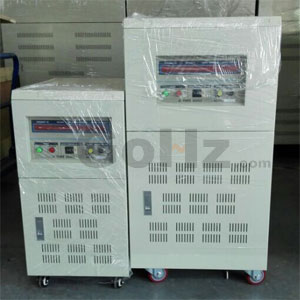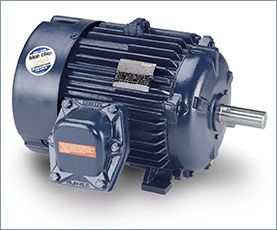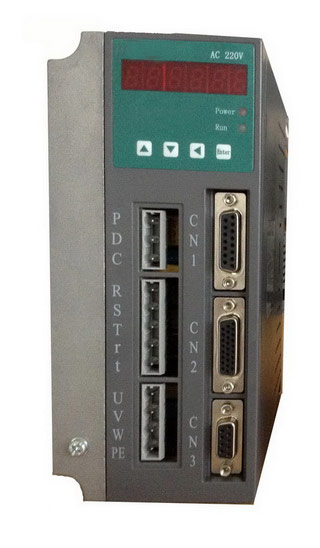to: Motor Troubleshooting
in Category: Wiki
Post Comments
<- - Back to Motor Troubleshooting - ->
The troubleshooting guide outlines a comprehensive variety of motor problems. Generally the categories are arranged according to symptoms offering brief suggestions concerning what to look for when investigating motor failures (why motor fails?) and often providing advice on how to correct the problem once it has been identified.Motor Shuts Off Before Full Speed
A. Motor also hums (single phase motor)
B. Overloaded
D. Inaccurate method of measuring RPM
E. Wrong connections
Motor Shuts Off After Reaching Full Speed
A. Overload
B. Bearings
C. Defective overload protection
D. Fuses
Motor Starts Slowly
10 or more seconds on small motors - 15 or more seconds on large motors
A. Bad capacitor
B. Overloaded
C. Low voltage
D. Wrong connections
E. Across the line start.
(5-10% voltage drop causes 10-20% or more drop in starting torque).
-
Check connections between power supply and motor.
-
Check conductor size between power supply and motor.
- Consult power company/check system.
-
Reduce starting load.
- Increase motor size.
Loss of starting torque
a. Y-Delta - starting torque reduced to 33%.
-
Reduce starting load
-
Increase motor size.
-
Choose type of starter with higher starting torque.
- Reduce time delay between 1st and 2nd step on starter
b. Part winding starter - starting torque reduced to 50%.
-
Reduce starting load
-
Increase motor size.
-
Choose type of starter with higher starting torque.
- Reduce time delay between 1st and 2nd step on starter.
c. Auto transformer starter - starting torque reduced 25% to 64%.
-
Reduce the starting load
-
Increase the motor size.
-
Choose a different model of starter with higher starting torque.
-
Reduce the time delay between the 1st and 2nd starter steps.
- Get the motor across the line sooner.
Motor Runs Excessively Hot
A. Overloaded
-
Clean external ventilation system
- Check fan operation
-
Blow out internal ventilation passages.
- Eliminate external interference to motor ventilation.
D. Unbalanced input current.
E. Single phased
F. Drive belt too tight
G. Bad capacitor
H. Worn bearings
I. Wrong connections
J. Dirt, dust, trash
Excessive Vibration
A. Check alignment of motor and driven load - check and realign motor with the driven machine.
B. Check for Unbalance in Motor and Driven Load
-
Be sure motor mounting/shims are tight and solid.
- Check grouting for cracks
-
Disconnect belt or coupling
-
Restart motor
- If vibration stops, the unbalance is in the driven load.
-
Remove sheave or coupling
-
Securely tape 1/2 key in shaft key way
-
Restart motor
- If vibration stops, the unbalance is in the sheave or coupling.
-
If the vibration does not stop after checking a, b and c above, the unbalance is in the motor
- Replace the motor. Make sure the new mounting is proper.
D. Bearings?
E. Load and motor
F. Grounds or shorts?
Motor Runs Noisily Under Load
A. Motor hums excessively
B. Noisy bearings (listen to bearings)
-
Make sure mounting is solid level.
- The bearing may have been destroyed.
D. Clicking sound is regularly heard
E. Rapid knocking sound heard on all types of motors - motor is out alignment causing excessive end play.
F. Check for brush chatter.
Never Reaches Normal Operating Speed (RPM)
A. Motor also hums (single phase motor)
B. Possible overload
C. Excessively low voltage
D. Inaccurate method of measuring RPM
E. Wrong connections
F. Bad capacitor
Smells Funny / Smokes
A. Smell something burning or overheating or see smoke
-
Clean motor by wiping off excess dirt
- Use compressed air to blow dust particles out of passageways
-
Bearings are overheated
-
Too much lubrication of the bearing
- Bearings are bad
High Input Current
A. Accuracy of ammeter readings
B. Motor running idle
C. Motor running loaded
Unbalanced Input Current
5% or more deviation from the average input current
A. Unbalanced line voltage due to:
-
If there is doubt as to whether the trouble lies with the power supply or the motor, perform the following test:
Rotate all three input power lines to the motor by one position. (i.e. move line #1 to #2 motor lead, line #2 to #3 motor lead and line #3 to #1 motor lead).
If the unbalanced current pattern follows the motor leads, the problem is in the motor.
{NOTE: A small voltage unbalance will produce a large current unbalance.}
Excessive Voltage Drop
More than 2 or 3% of nominal supply voltage
A. Excessive starting or running load
- Reduce load.
- Consult power company.
- Increase supply conductor line sizes.
- Check motor leads and eliminate poor connections.
- All 3 phase leads shall be in a single conduit, per National Electrical Code. (This applies only to metal conduit with magnetic properties.)
Overload Relays Tripping
A. During motor starting
-
Reduce starting load.
- Increase motor size if necessary.
-
Improve power supply.
- Increase motor size if necessary.
Sparks
A. Sparking and flashing coming from the brushes
Wound Rotor Motor Problems
A. Sparking and flashing from brushes
B. Brushes are worn, stuck, not set
C. Commutator is dirty, rough, has high bars, or is out of round.
D. Voltage is either too high or too low.
E. Governor is either stuck or out of adjustment.
 Servo Motor & Drives
Servo Motor & DrivesCategory
Featured
 Assuming that you checked the mechanical properties and the centrifugal force at the rotor at the higher speed from 50Hz to 60Hz, and they are OK, then ...
The troubleshooting guide outlines a comprehensive variety of motor problems. Generally the categories are arranged according to symptoms offering brief ...
The main difference between AC and DC motors is that the magnetic field generated by the stator rotates in the case of AC motors. A rotating magnetic ...
Assuming that you checked the mechanical properties and the centrifugal force at the rotor at the higher speed from 50Hz to 60Hz, and they are OK, then ...
The troubleshooting guide outlines a comprehensive variety of motor problems. Generally the categories are arranged according to symptoms offering brief ...
The main difference between AC and DC motors is that the magnetic field generated by the stator rotates in the case of AC motors. A rotating magnetic ...
 First, 7 things to consider when choosing an electric motor: Choosing the right motor isn’t always straightforward. There are so many variables to ...
Induction motors operate on the principal of current induction in the rotor which must rotate at a speed less than synchronous speed for induction to ...
First, 7 things to consider when choosing an electric motor: Choosing the right motor isn’t always straightforward. There are so many variables to ...
Induction motors operate on the principal of current induction in the rotor which must rotate at a speed less than synchronous speed for induction to ...
 Gozuk synchronous ac servo drive is designed and manufactured, employing the advanced control algorithm based on the market demand, which can realize ...
A BLDC motor may have a trapezoidal Back EMF, there is something called Trapezoidal Motor Control Methodalogy (TRZ). TRZ is an extension of 6-step control ...
Permanent Magnet motors are more efficient than SCIM as the field in the rotor is permanently there. The big advantage for permanent magnet motors is in ...
Gozuk synchronous ac servo drive is designed and manufactured, employing the advanced control algorithm based on the market demand, which can realize ...
A BLDC motor may have a trapezoidal Back EMF, there is something called Trapezoidal Motor Control Methodalogy (TRZ). TRZ is an extension of 6-step control ...
Permanent Magnet motors are more efficient than SCIM as the field in the rotor is permanently there. The big advantage for permanent magnet motors is in ...
